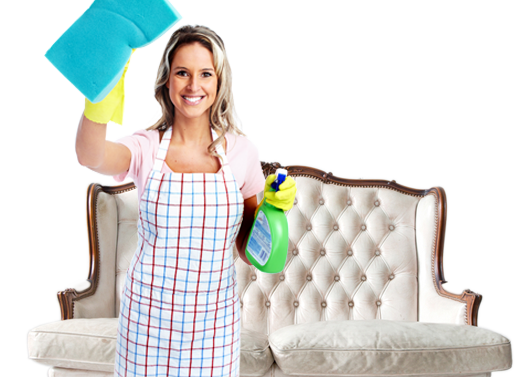Vital Breath: The Essential Need for Indoor Air Quality
Posted on 03/10/2025
Vital Breath: The Essential Need for Indoor Air Quality
When was the last time you considered the air you breathe inside your home or workplace? While most of us are vigilant about outdoor pollution, indoor air quality often goes unnoticed--despite the fact that we spend up to 90% of our lives indoors. This in-depth article explores why clean indoor air is indispensable, what factors threaten it, and how you can safeguard your health and well-being by prioritizing indoor air quality in your everyday life.
What Is Indoor Air Quality (IAQ)?
Indoor air quality (IAQ) refers to the condition of the air within and around buildings and structures, especially as it relates to the health and comfort of occupants. Good IAQ means the air is free from harmful pollutants, allergens, and irritants--contributing to an environment where people can breathe, work, sleep, and live comfortably.
Vital breath isn't just a poetic phrase; it speaks to our fundamental need for clean, breathable air. Inadequate indoor air quality can lead to a variety of health complications, ranging from minor irritations to severe, chronic illnesses.

Why Is Good Indoor Air Quality So Important?
The Essential Connection Between Air Quality and Health
We often assume that being indoors shields us from the hazards of pollution, but in reality, the concentration of indoor pollutants can be 2 to 5 times higher than typical outdoor levels. Why is this concerning? Because every breath you take in a poorly ventilated space could affect your immediate and long-term health.
- Respiratory Health: Exposure to dust, pet dander, mold spores, and volatile organic compounds (VOCs) can exacerbate asthma and allergies.
- Mental Performance: Studies link high levels of indoor pollutants to decreased cognitive function, poor concentration, and lower productivity.
- Long-term Risks: Chronic exposure to indoor air pollution increases the likelihood of cardiovascular diseases, cancer, and other serious conditions.
- Children & Elderly: Vulnerable groups like young children and older adults are especially sensitive to poor indoor air conditions.
Common Sources of Indoor Air Pollution
Recognizing what can pollute your indoor spaces is a critical step in protecting your vital breath. Many sources are surprisingly routine and easily overlooked:
- Household Cleaning Products: Contain chemicals that release volatile organic compounds (VOCs) into the air.
- Poor Ventilation: Traps dust, mold spores, and other pollutants inside.
- Building Materials: Paints, adhesives, and furnishings often emit formaldehyde and other toxic substances.
- Cooking and Heating Devices: Gas stoves and fireplaces release carbon monoxide and nitrogen dioxide.
- Humidity and Dampness: Create ideal conditions for mold and bacteria to thrive.
- Tobacco Smoke: Fills indoor spaces with carcinogenic particles and gases.
- Pet Dander and Biological Allergens: Common in homes with pets, causing respiratory issues.
The Risks of Poor Indoor Air Quality
Short-Term Effects
- Eye, nose, and throat irritation
- Headaches and dizziness
- Fatigue and difficulty concentrating
- Aggravation of asthma or allergy symptoms
Long-Term Effects
- Chronic respiratory diseases (asthma, bronchitis)
- Cardiovascular issues
- Developmental problems in children
- Cancer (due to long-term exposure to carcinogens)
- Reduced life expectancy
Ignoring the importance of indoor air quality can have dire consequences that go beyond mere discomfort. These health risks make it clear that maintaining clean indoor air is not optional--it's essential for your long-term well-being.
Invisible Dangers: The Pollutants You Can't See
Some of the most dangerous threats to your indoor air quality are invisible. Here are a few to watch out for:
- Radon: A naturally occurring radioactive gas that seeps in through foundation cracks and can lead to lung cancer.
- Carbon Monoxide: Produced by fuel-burning appliances, it can be deadly at high concentrations.
- Mold Spores: Invisible to the naked eye, mold causes allergic reactions and respiratory issues.
- Asbestos Fibers: Found in older buildings, they cause lasting lung damage and cancer when inhaled.
Since you often can't smell or see these pollutants, vigilance and detection are key to ensuring a safe living or working space.
How to Assess Your Indoor Air Quality
The Role of Air Quality Monitors
Investing in an indoor air quality monitor is a proactive step towards healthier living. These devices measure the levels of common pollutants such as VOCs, CO2, particulate matter (PM2.5), and humidity.
Other Assessment Methods:
- Check for visible dust, mold, and damp spots.
- Notice persistent odors or stuffiness.
- Track health symptoms that emerge or worsen indoors.
- Consult with professionals for comprehensive air testing.
Regular assessment of indoor air quality is important for early detection of trouble and for maintaining a space that encourages robust health.
Simple Strategies to Improve Indoor Air Quality
Improving your indoor air conditions doesn't require a complete home overhaul. Here are actionable tactics to ensure every breath you take is a vital breath:
Enhance Ventilation
- Open windows and doors when weather and safety permit
- Install exhaust fans in bathrooms and kitchens
- Consider mechanical ventilation systems for tightly sealed homes
Invest in Air Purifiers
- High Efficiency Particulate Air (HEPA) filters remove dust, allergens, and even some pathogens.
- Carbon filters absorb volatile organic compounds and odors.
Manage Humidity
- Keep humidity between 30-50% to prevent mold growth.
- Use dehumidifiers in damp areas like basements.
Clean Regularly and Wisely
- Vacuum carpets and upholstery with HEPA-filtered vacuums.
- Wash bedding frequently to control dust mites.
- Use fragrance-free and low-VOC cleaning products.
Maintain HVAC Systems
- Change filters according to manufacturer recommendations.
- Schedule annual maintenance for heating and cooling systems.
Avoid Smoking Indoors
Tobacco smoke contains thousands of chemicals, many of which are known carcinogens. Creating a strict no-smoking policy indoors is crucial for healthy, breathable air.
Control Sources of Pollution
- Opt for low-emission paints, varnishes, and cleaning agents.
- Store chemicals and solvents outside the living quarters if possible.
- Use natural alternatives whenever available.
Special Focus: Indoor Air Quality in the Workplace
The air quality inside offices and other workplaces can substantially impact employee performance, absenteeism, and overall morale. Employers should:
- Ensure HVAC systems are cleaned and serviced regularly.
- Minimize use of strong cleaning chemicals during work hours.
- Give employees access to outdoor air whenever possible.
- Provide proper facilities for complaint and maintenance reporting.
Remember, protecting indoor air environments benefits employers through reduced health-related absences and boosted productivity.
Technological Solutions: Smart Homes and Clean Air
Modern technology offers innovative solutions to bolster indoor air quality:
- Smart Air Purifiers: Automatically adjust filtration based on real-time air quality data.
- IAQ Monitors: Provide notifications and tips for corrective actions.
- Automated Ventilation: Stale air is expelled and replaced with fresh outdoor air under optimal conditions.
Integrating these solutions can offer continuous protection and make the management of your vital indoor environment almost effortless.
Benefits of Prioritizing Indoor Air Quality
- Improved health and reduced occurrence of respiratory illnesses
- Better sleep quality and enhanced cognitive function
- Increased comfort and overall well-being
- Higher productivity and fewer sick days
- Preservation of furniture and building materials from mold and pollutants
Ultimately, investing in the quality of your indoor air is an act of self-care for you and your loved ones.

Frequently Asked Questions About Indoor Air Quality
What is the best way to measure indoor air quality?
Use electronic indoor air quality monitors that track pollutants, humidity, and particulate matter. Additionally, look out for signs like persistent odors, condensation, and mold visibility.
How often should I change my air filters?
For optimal indoor air health, change filters every 1-3 months, or as specified by the manufacturer and local air quality levels.
Can houseplants improve air quality?
While houseplants can absorb certain pollutants, their overall impact is generally modest compared to air purifiers and ventilation strategies. Use them as a supplement, not a substitute, for other air quality improvements.
Are there natural ways to improve indoor air?
Yes! Open windows regularly, keep your home dry, use fragrance-free cleaning products, and avoid smoking indoors. Natural ventilation and moisture control go a long way toward fresher, safer air.
Conclusion: Make Every Breath Count with Optimal Indoor Air Quality
The importance of indoor air quality cannot be overstated. From preventing chronic diseases to enabling sharper minds and more energetic bodies, the benefits touch every aspect of our lives. Don't underestimate the power of a clean indoor atmosphere--it's the bedrock of health and happiness for you and your family.
Take action today:
- Put the tips in this guide to work
- Monitor your home or office's air quality
- Invest in cleaner, healthier air solutions
Remember: your vital breath is too valuable to leave to chance. Ensure that every breath you take indoors supports a healthy, fulfilling, and vibrant life.





